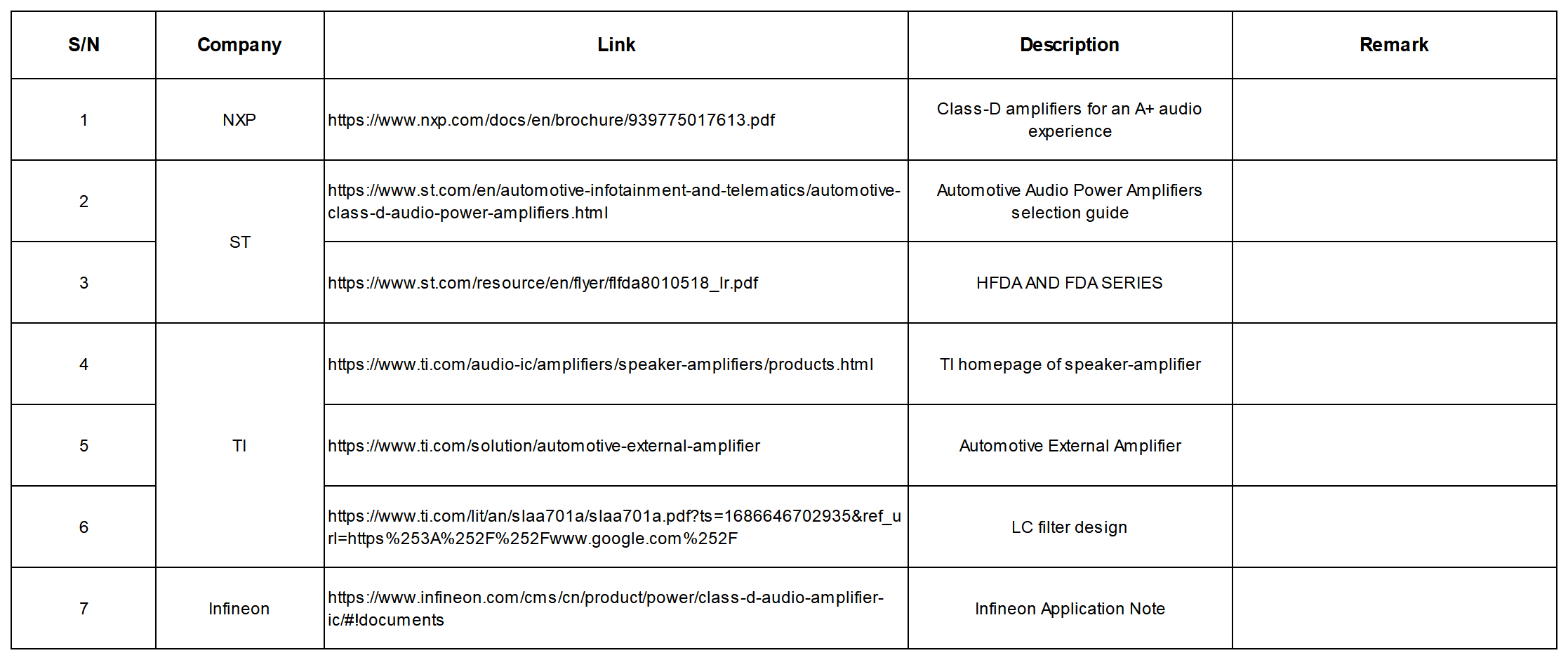New energy vehicles are increasingly focusing on the audio experience, with high-power amplifiers, Dolby audio, overhead speaker 7.1.4, 7.3.4 gradually entering the automotive field. Multiple sound tracks and ultra high-power amplifiers have overturned traditional automotive audio design. Especially with the rapid development of Class D amplifier technology, it has become possible for mobile cinemas, concert halls, and HIFI audio systems in cars;
1.Design and selection of amplifier
1.1Brief of Class D inductor
How to choose the amplifier class for cars?With the technological breakthrough, Class D amplifier has become the mainstream technology of new energy vehicles.
What is a Class D amplifier? Class D amplifiers are different from traditional Class A amplifiers and Class AB amplifiers. They are amplifiers with switching signals, with high switching frequency (>300KHZ), high efficiency (>80%), high performance (THD<0.05%), high power (10-1000W per track), and high dynamic amplifier technology.
Although Class D amplifiers have advantages that traditional Class A and Class AB amplifiers cannot match, Class D amplifier design also faces great challenges. For example, the power inductor design of Class D amplifiers has become an industry challenge due to its small size, low cost, ultra-low distortion, and ultra-high power design requirements. How to design high-performance, ultra-high linearity, and ultra-low distortion Class D inductors has become a goal pursued by major inductor manufacturers.
1.2 Class D inductor design
1.2.1 Linear design of audio inductor for Class D amplifiers
When a certain magnetic field intensity is reached, magnetic saturation will occur, and the inductance will decay, affecting the current linearity of the audio inductor. Good current linearity is a technical challenge that major audio inductors manufacturers need to overcome. CODACA R&D team and suppliers have worked together to solve the issue, achieving industry-leading performance in high-power operation.
1.2.2 Excellent frequency response characteristics
The magnetic core UI value will change with increasing frequency, which is another challenge for Class D amplifier inductor.
The change in UI brings inductor changes, which will affect the filtering frequency, system linearity, and audio frequency response curve (with peak and valley changes); It can also cause nonlinear distortion in the Class D amplifier, affecting the overall performance of the audio system.
CODACA achieved a ± 6.5% frequency change through technological breakthroughs, with a 0.5% linear stability at operating frequencies of 300-900 kHz, significantly reducing distortion and leading performance.
1.2.3 Wide temperature linearity
The high temperature of the inductor can cause changes in current linearity and frequency linearity, which in turn affects the performance of class D filtering and leads to degradation of audio system level performance. This will pose a huge challenge in the design of mid to bass and subwoofer Class D amplifiers. CODACA has achieved excellent results through the design of materials and processes, demonstrating excellent characteristics in long-term, full range, single frequency power tolerance testing.
1.2.4 Low magnetic loss
Designing an audio inductor with a low loss magnetic core helps to reduce core heat generation, and improve the overall output efficiency.
Class D amplifier audio inductors may encounter performance and cost conflicts. CODACA achieves an excellent balance between cost and magnetic loss through technological breakthroughs, and has a high cost-effectiveness ratio.
1.2.5 Continuous and stable high current operation
Excellent transient characteristics and long-term high current stability have a crucial impact on the long-term reliability of Class D amplifiers.
The CODACA R&D team reduces the DC loss, eddy current loss, and AC loss of the coil through design, ensuring not only excellent dynamic characteristics but also long-term high-power tolerance.
2. Class D amplifier selection
FDA801A is the 3rd generation Class D amplifier of ST, widely used in the automotive industry, with good industry recognition. Its closed-loop class D inductor feedback technology operates at high voltage (up to 25V) and has an ultra-high efficiency of 93%. Its 25V power supply can provide a power output of 135W and can also be used in the design of Class D amplifiers (Class D) for sub-woofers.
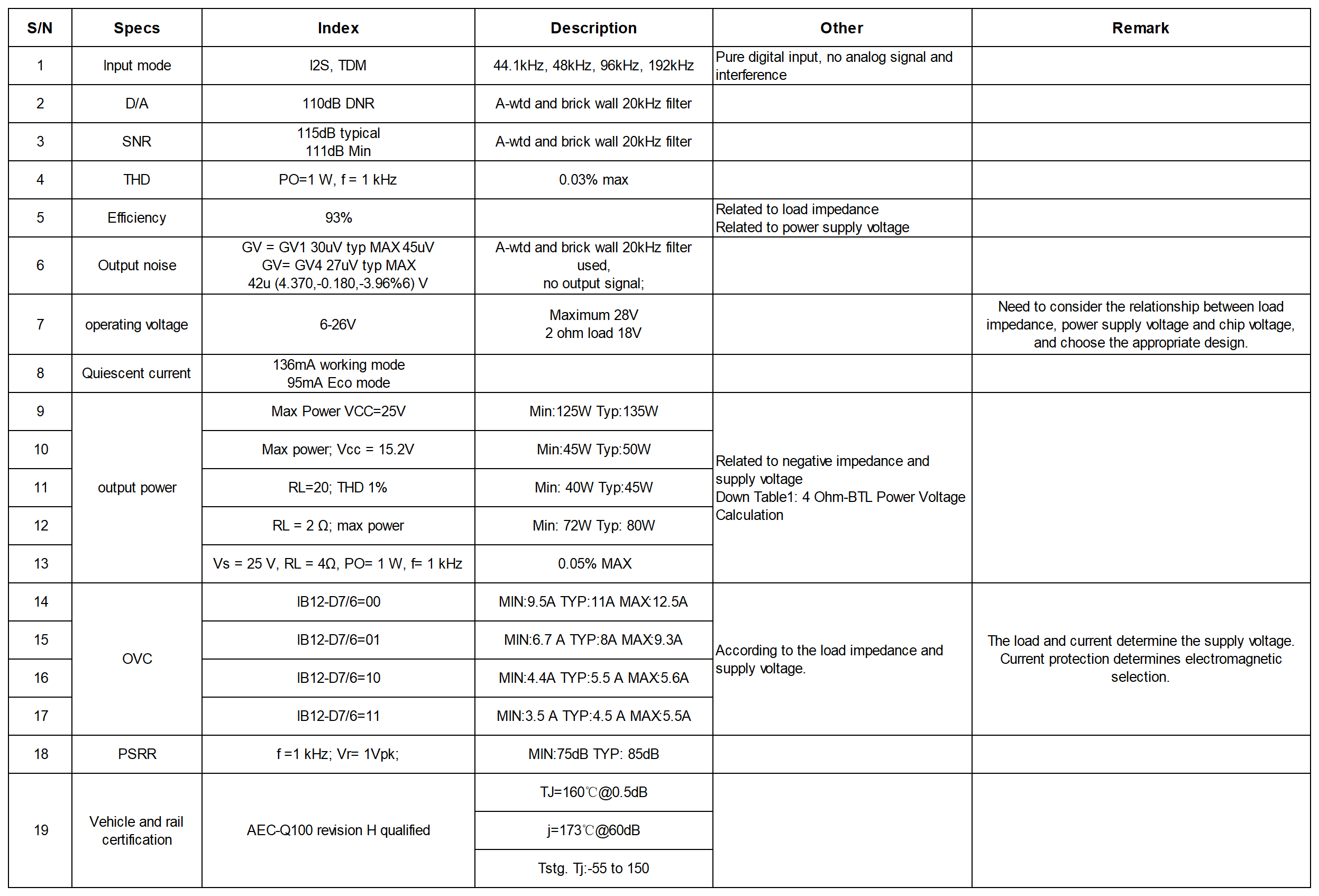
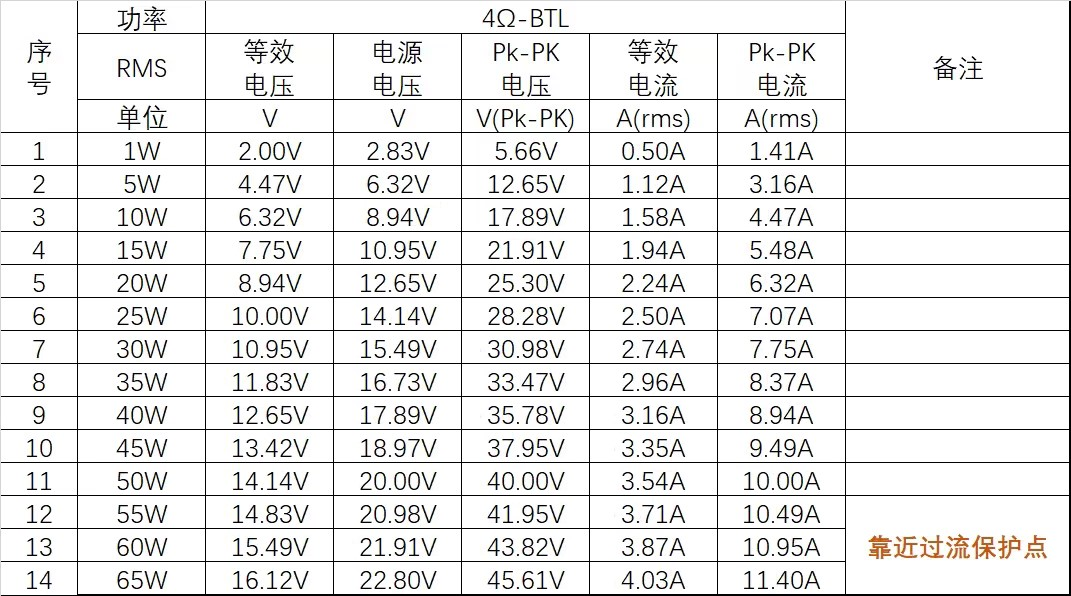
Table1: 4 Ohm-BTL Power Voltage Calculation
Table1: 4 Ohm-BTL Power Voltage Calculation
3. Amplifier design
3.1 Filter structure
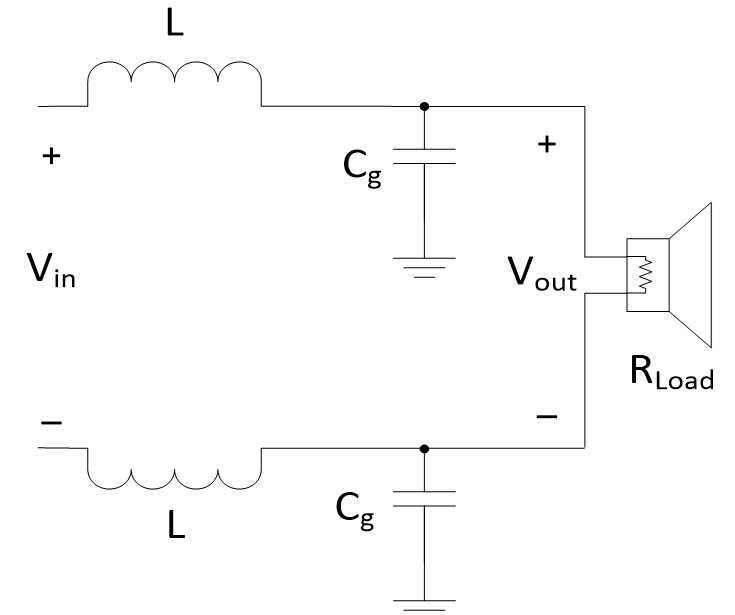
3.2 Calculation formula

3.3 Curve
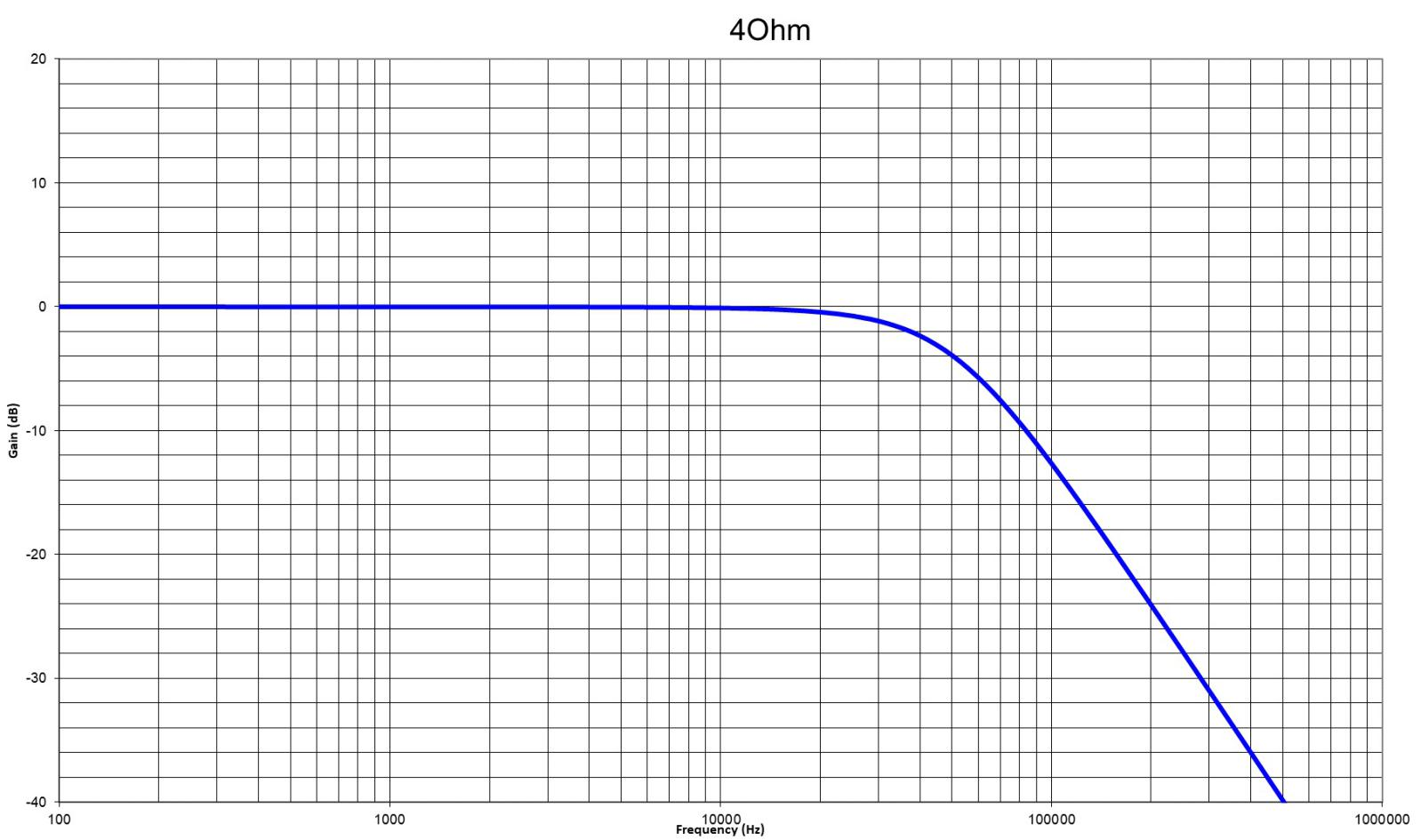
Inductance: 10uH
Aluminium foil capacitor: 1uF
Fcut-off=50.3kHz
4. Performance Testing of Class D Amplifiers
4.1 Testing Principles
Class D audio inductor test and amplifier performance test is a more complex and professional work: load, then input different power, output THD+N curv. Evaluate the amplifier distortion performance, and evaluate the distortion performance of the digital amplifier audio inductor.
Test and analyze the FTT-curve of a single frequency with different powers, you can test the final distortion distribution performance of Class D amplifiers(evaluate the energy distribution of multiple harmonics (17.990, -0.070, -0.39%). Exchange different audio inductor models.
THD+N curves of different power audio inductors make it easy to test Class D inductor distortion performance, linearity, and power output consistency.
4.1.1 Testing equipment
1. AP555 Audio Analyzer
2. AUX002 Class D filter
3. 24V switching power supply
4. 100W 4 ohm load resistance
4.1.2 Curve
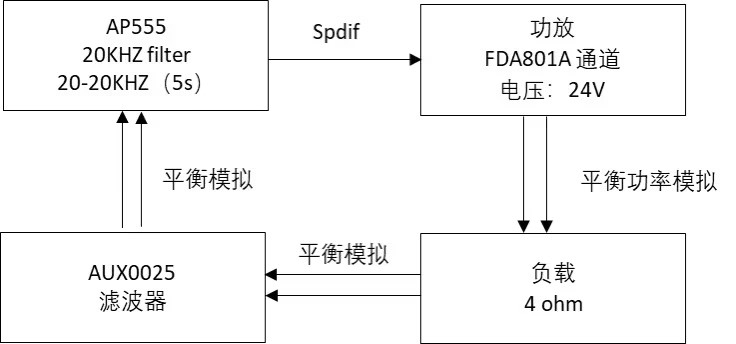
4.2 THD+N VS frequency and different power scanning tests
Test method: AP555 + THD+N load.
Test purpose: To evaluate the system and audio power inductor performance.
4.3 Comparison and selection of high-power inductors
4.3.1 25W THD+N frequency scanning test
Supplier A VS CODACA CSD1013-C-100L
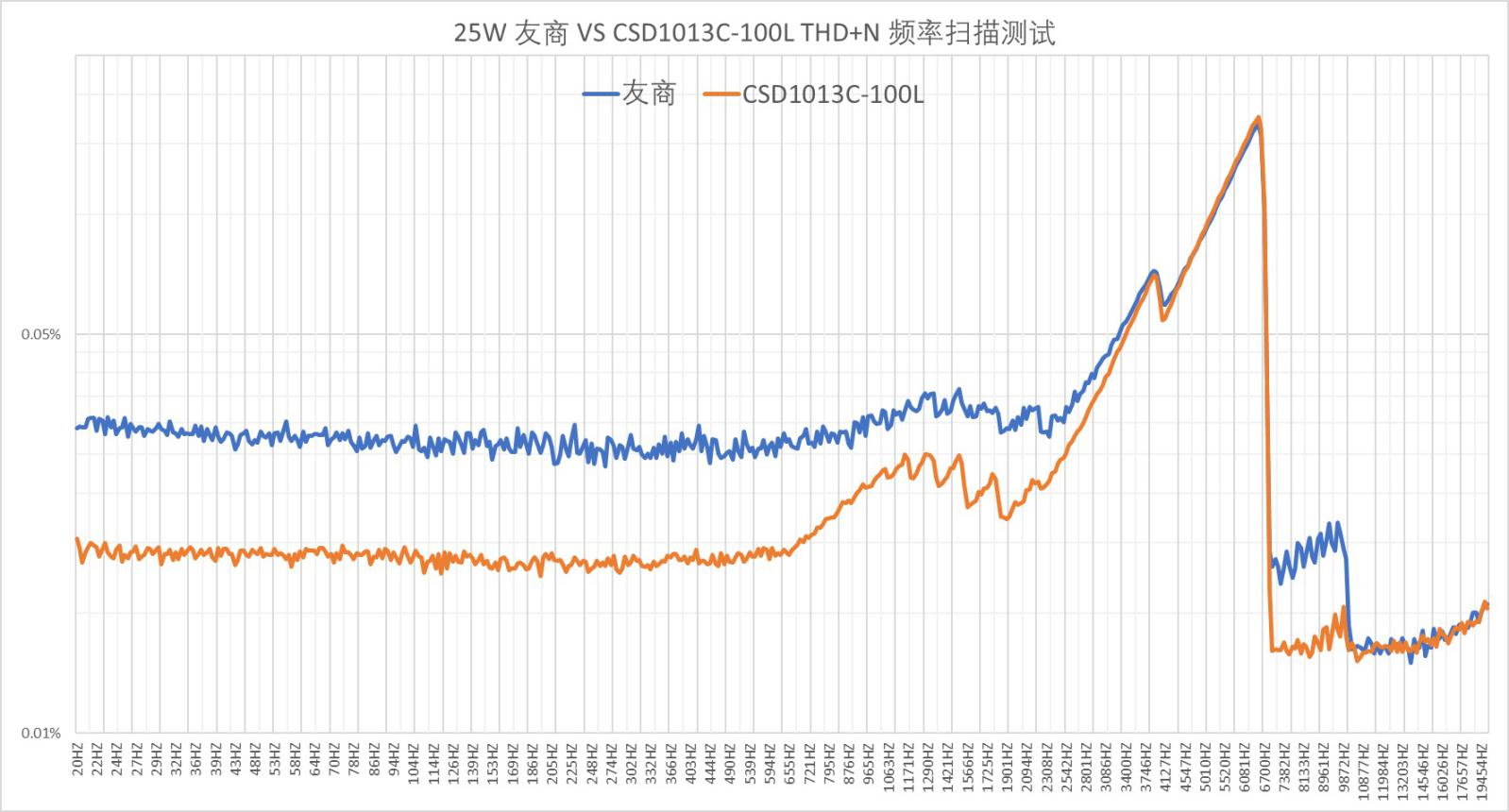
The CSD1013C-100L digital audio inductor has excellent high-power operating characteristics, even if it is 25w high power, the low-frequency distortion is about 0.018%, which is much lower than the 0.03% of Supplier A.
4.3.2 30W THD+N frequency scanning test
Supplier A VS CODACA CSD1013-C-100L
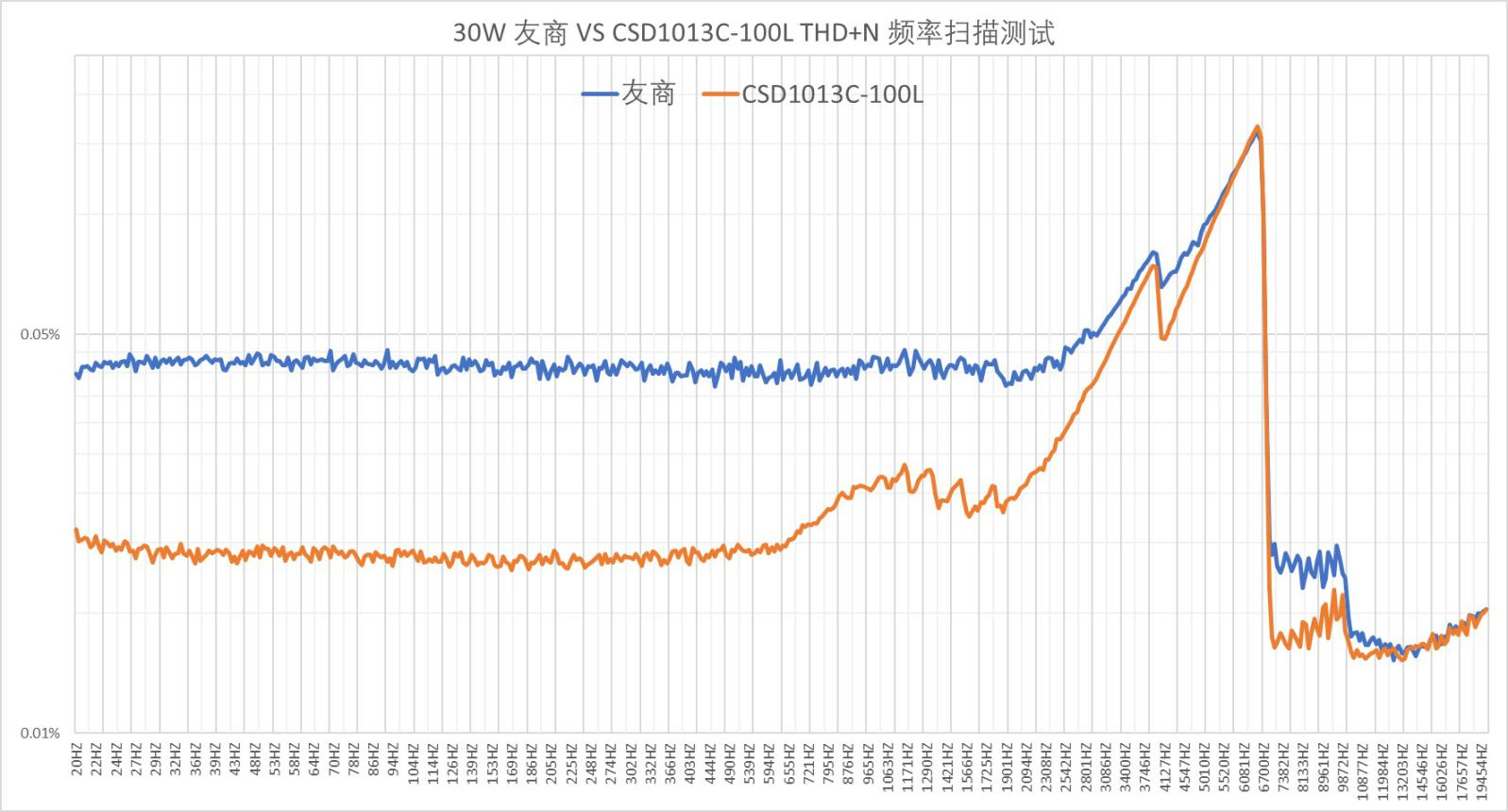
The CSD1013C-100L digital inductor was tested at 30w of stable high power, with medium and low frequency distortion of about 0.018%, maintaining excellent linearity, and the distortion of Supplier A increased from 0.03% to about 0.044% (increase 47%).
4.3.3 35W THD+N frequency scanning test
Supplier A VS CODACA CSD1013-C-100L
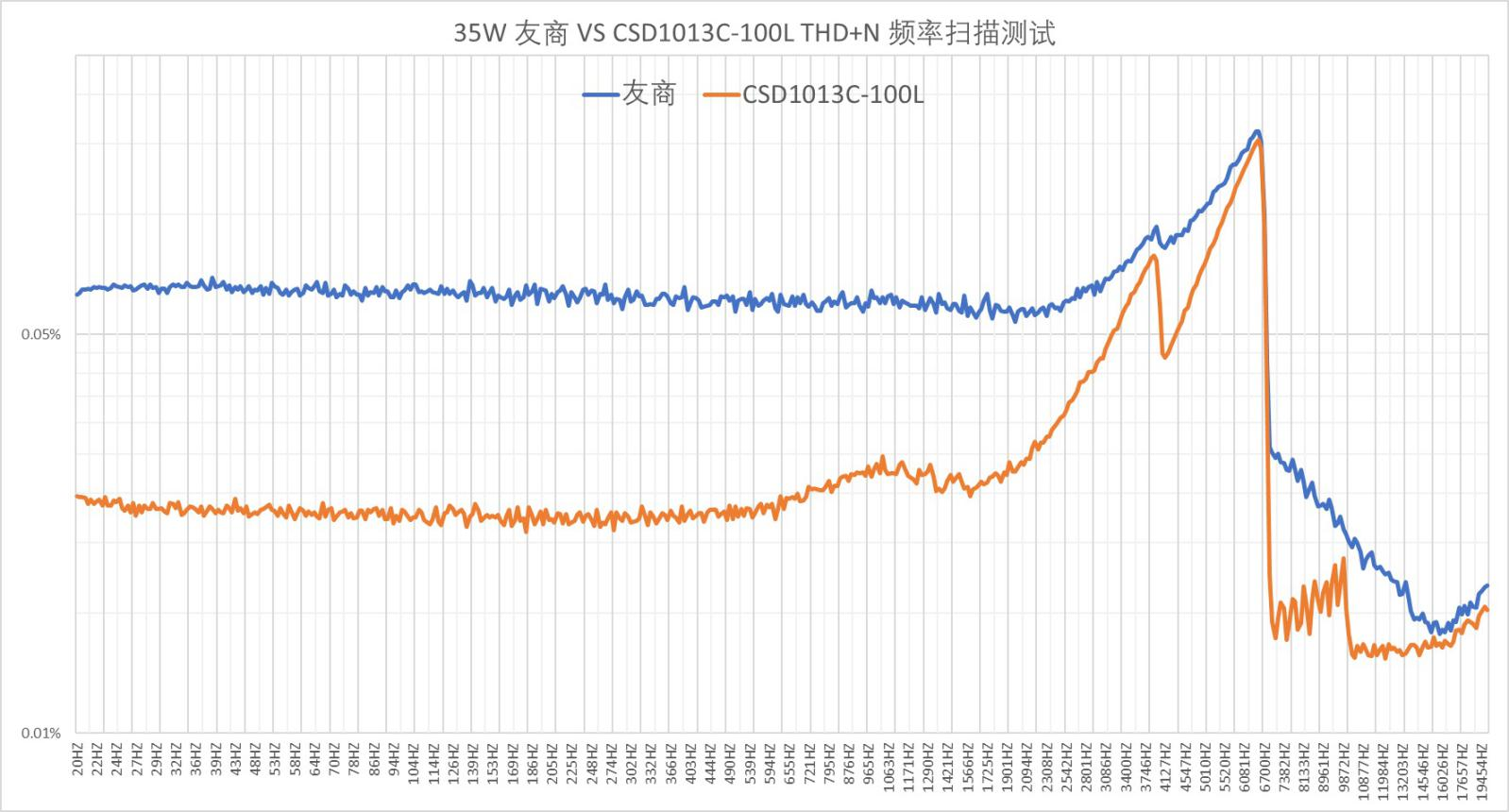
The CSD1013C-100L has excellent high-power operating characteristics, 35w of stable high power, medium and low frequency distortion of about 0.02%, far lower than 0.055% of Model A.
4.3.4 40W THD+N frequency scanning test
Supplier A VS CODACA CSD1013-C-100L
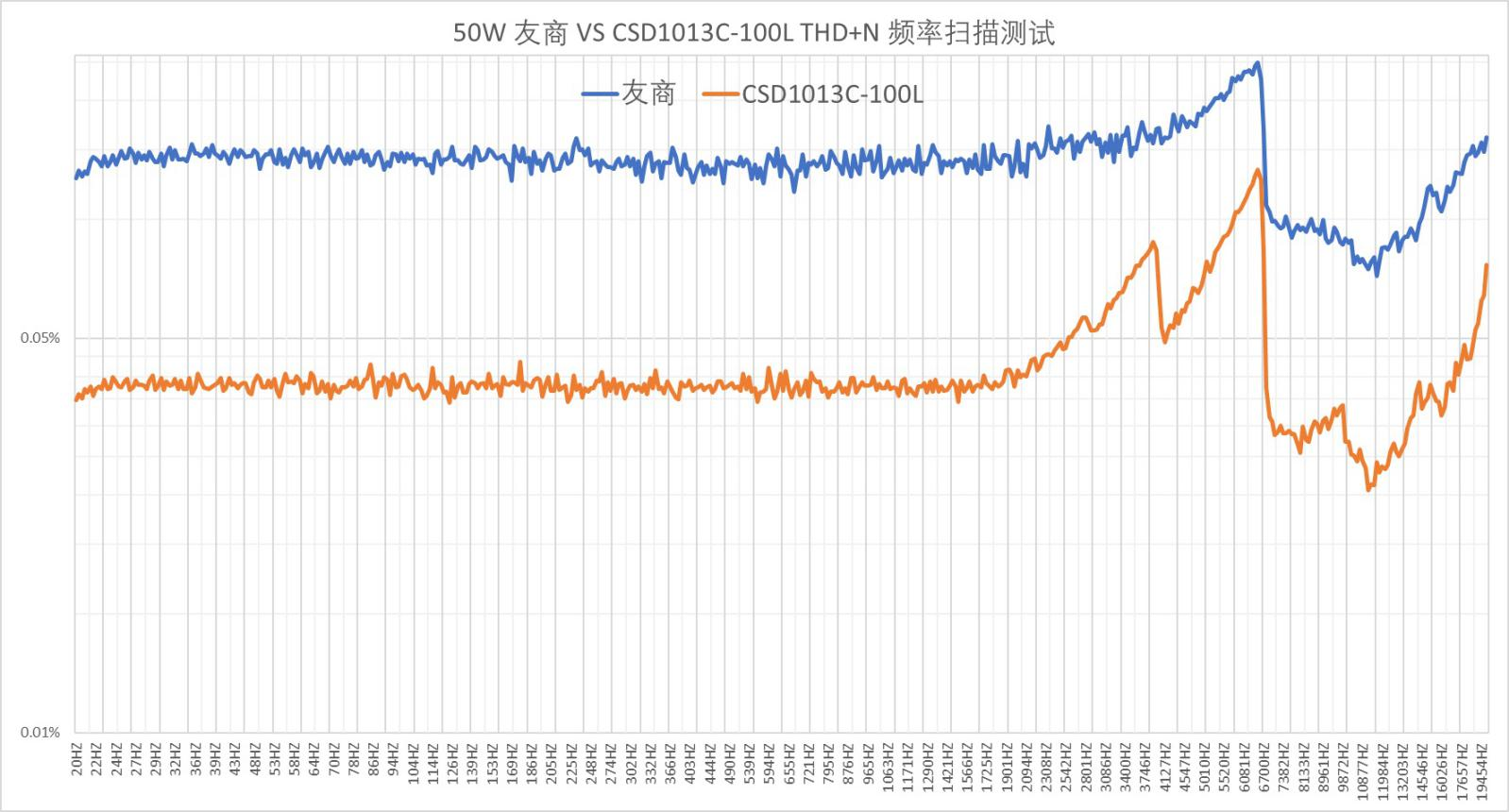
CSD1013C-100L has excellent high-power operating characteristics, with a stable high power of 50w, the mid to low frequency distortion is about 0.038%, far lower than the 0.070% of Model A.
5.4 FFT analysis
5.4.1 100Hz 30W FFT analysis
Supplier A VS CODACA CSD1013-C-100L
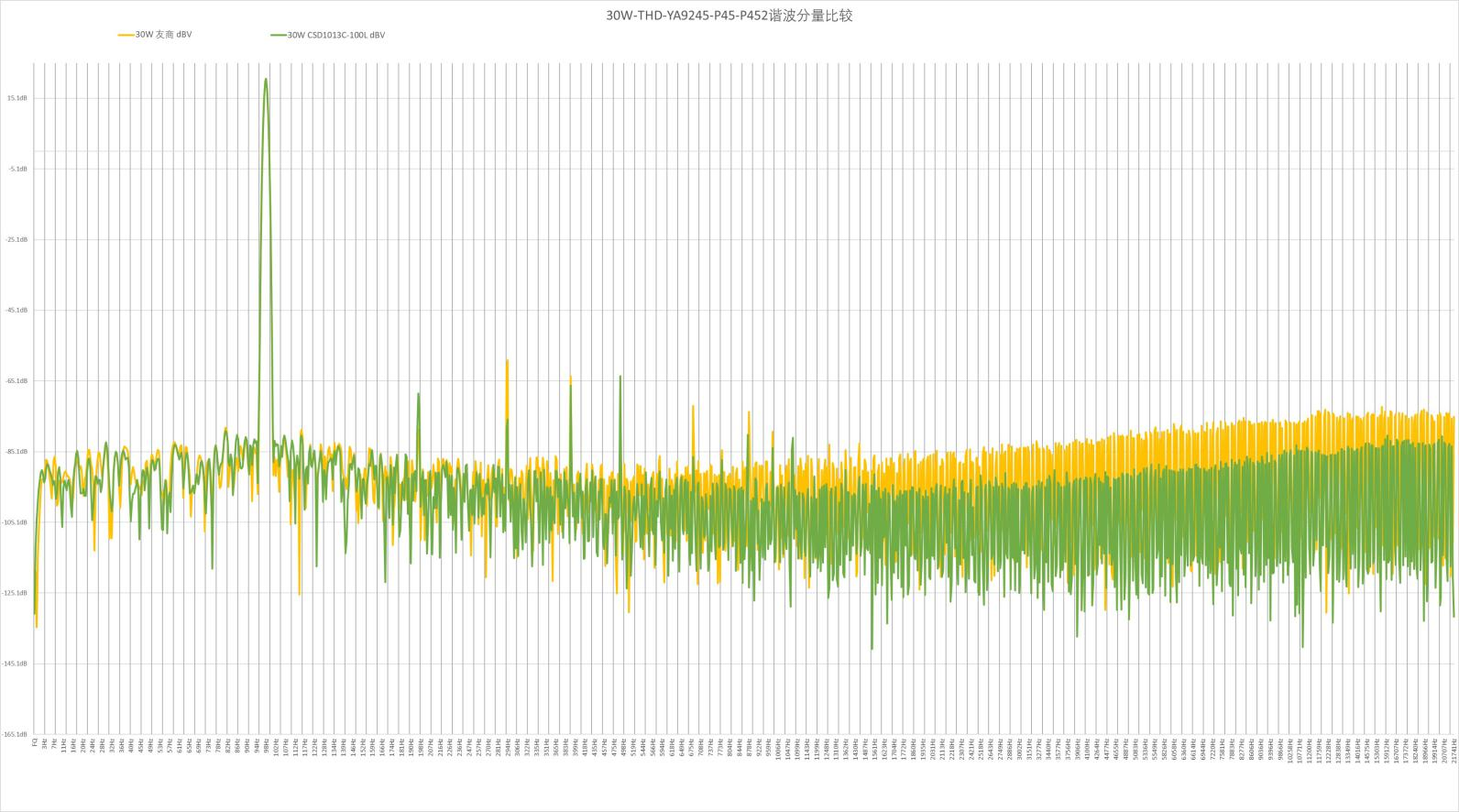
In the 30W high-power test, the Class D audio inductor distortion 3-time harmonic contribution of the friend company is more than 40%, and the CSD1013C-100L is less than 5% contribution, and the noise floor is also 6-8db (30-50%) lower than of the Model A, achieving excellent listening performance.
This is one of the most important metrics to measure the performance of audio power inductors.
5.4.2 100Hz 35W FFT analysis
Supplier A VS CODACA CSD1013-C-100L

In the 35W high-power test, Model A Class D audio inductor distortion 3-time harmonic contribution exceeded 45%, CSD1013C-100L only 5% did not contribute, and the bottom noise was 6-8db(30-50%) less than Model A, achieving excellent hearing performance.
This is one of the important indicators to measure the performance of audio power inductors.
5.4.3 100Hz 40W FFT analysis
Supplier A VS CODACA CSD1013-C-100L
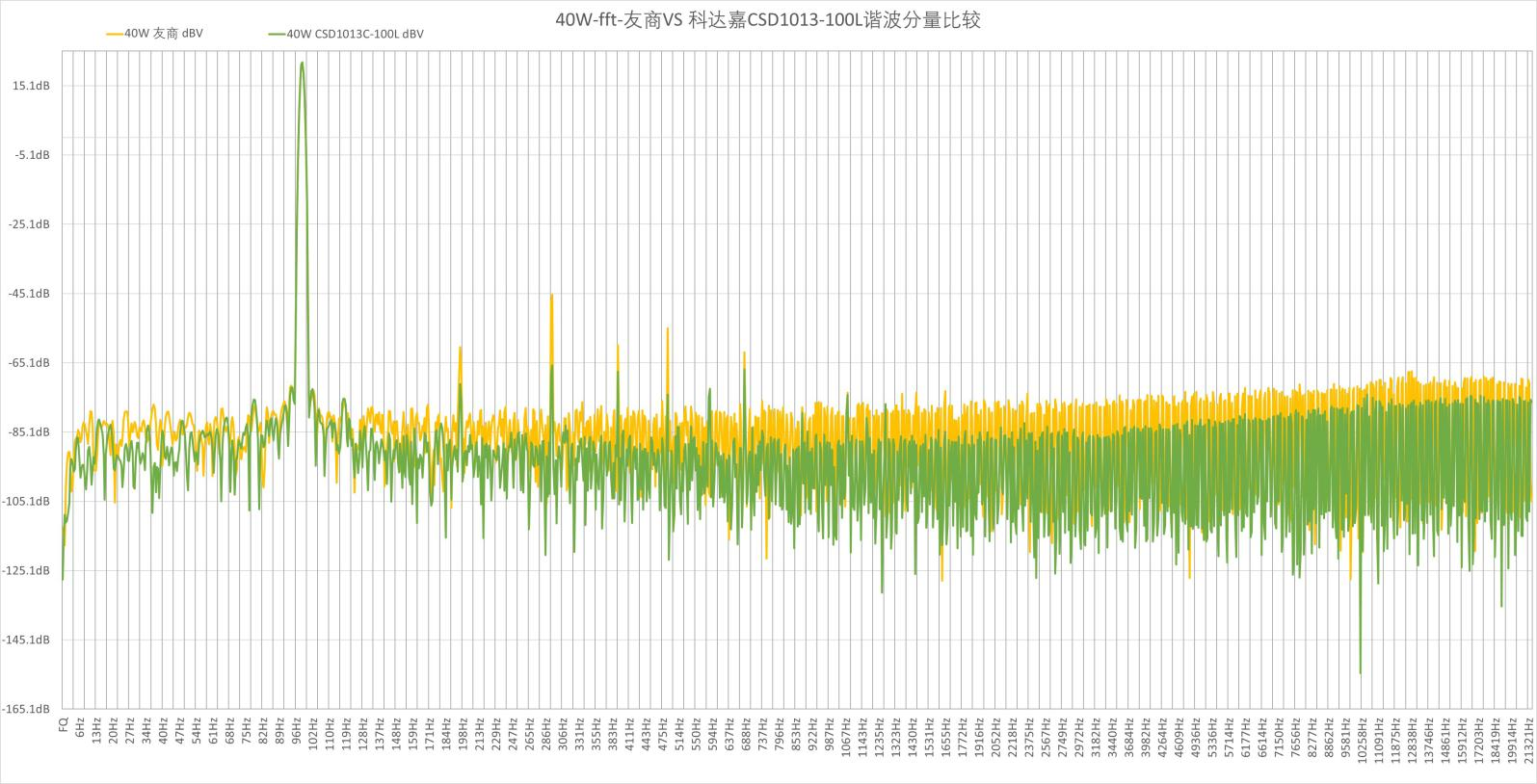
40W high-power test, the Class D audio inductor distortion of friends is comprehensively improved, CSD1013C-100L is relatively stable, the distortion is still relatively balanced, and the noise floor is 6-8db (30-50%) lower than that of friends.
5.4.4 00Hz 50W FFT analysis
Supplier A VS CODACA CSD1013-C-100L
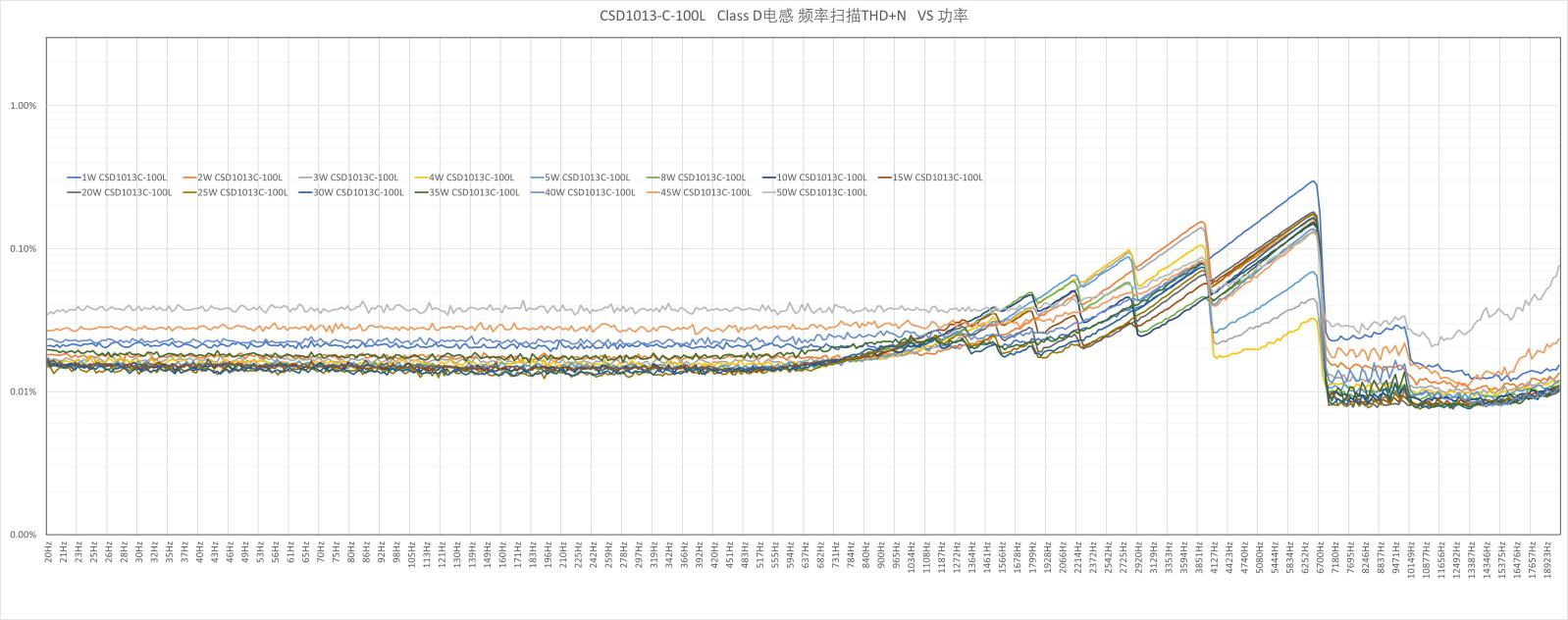
1W-40W's high-power long-term performance ability:0.016% to 0.161%, gap 0.155%.
Supplier A:
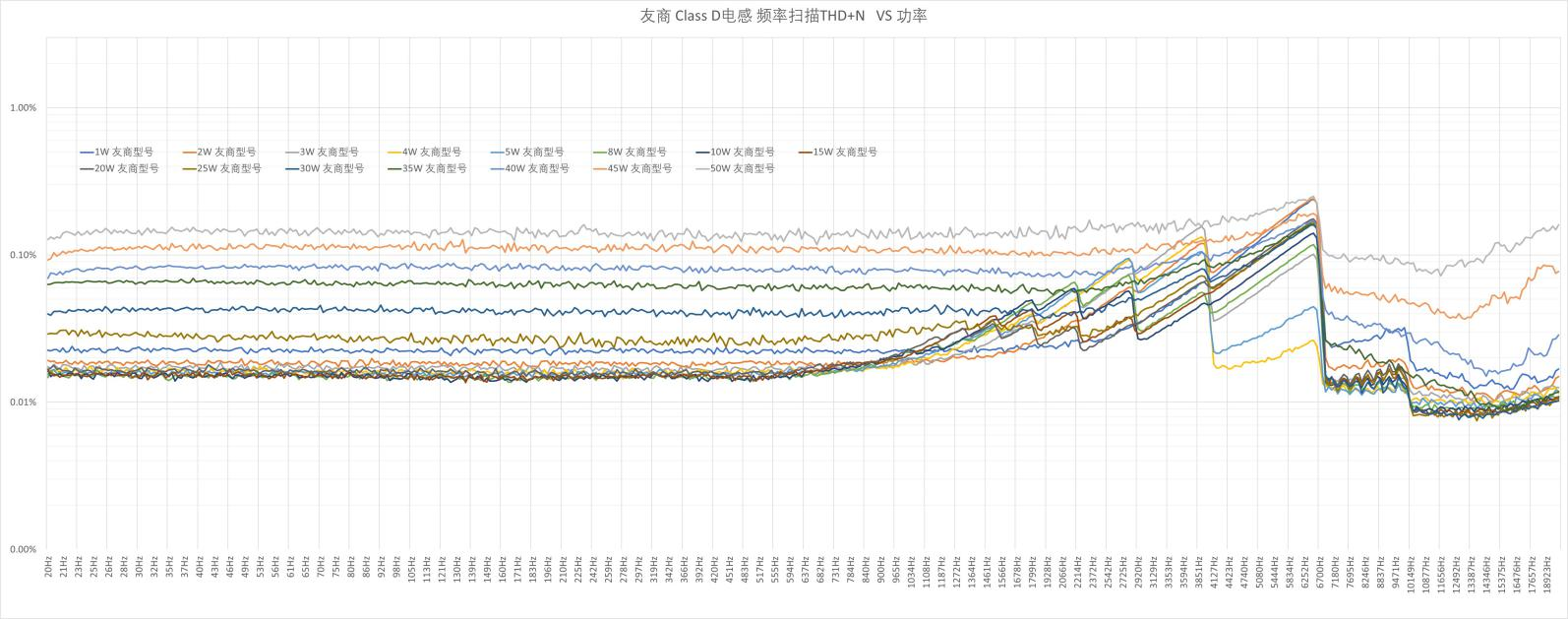
1W-40W's high-power long-term performance ability:0.016% to 0.161%, gap 0.155%.
6.Conclusion
6.1 As a leading supplier of inductors in the industry, Company A Class D inductors are still among the best in the industry, able to perform well in the full power range, and have also gained market success and widespread recognition.
6.2 CODACA audio power inductors has better linearity and harmonic distribution characteristics, which are more in line with auditory psychology (Chapter 5.4).
6.3 CODACA CSD1013C-100L has great advantages in low distortion, ultra-high linear current, wide temperature stability, and can be widely used in the design of 25-100W Class D amplifiers for automotive. It can achieve excellent performance for 300-800kHz switching frequency Class D amplifiers;
6.4 CODACA CSD1013C-100L redefined the FDA801A distortion curve and performance. In the specification sheet of it, THD+N curve under 1W 4ohms is 0.02%, while CSD1013C-100L was only 0.013%, 65% of it, and remained below 0.02% in the power below 35W (0.022% below 40W).
7.application note
